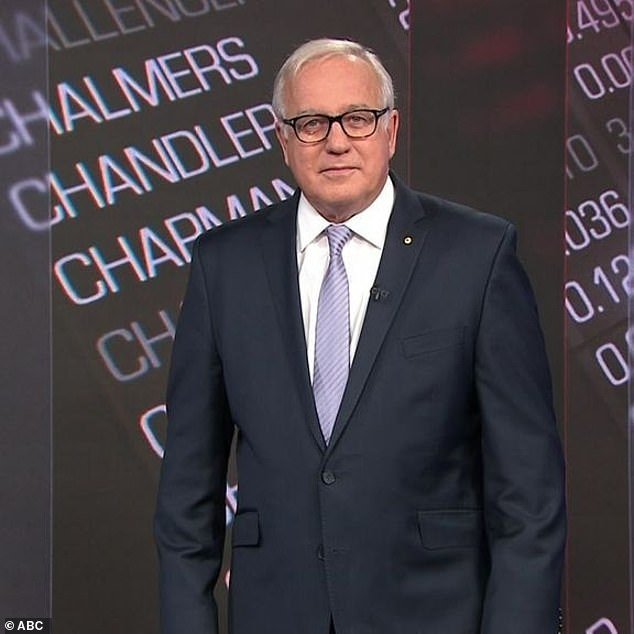The ABC’s financial expert Alan Kohler has launched a scathing critique of the Albanese government, accusing Labor of failing to tackle soaring house prices being driven by Australia’s surging migration levels.
Labor’s keystone housing policy, the National Housing Accord, plans to build 1.2million new homes by the end of the decade.
One year into the program, which Prime Minister Anthony Albanese promises is ‘ambitious, but achievable’, it was already three months behind schedule.
But Kohler believes that even if Australia manages to meet the ambitious target, demand – driven by migration – will continue to grow.
In a recent article for the ABC he wrote that the ‘big boost to real underlying demand is the number of human beings seeking shelter’.
About 1.4million migrants have arrived in Australia since the housing accord was signed in October 2022, he wrote, contributing to population growth of 1.7million.
Over the same period, only 512,000 homes have been built, contributing to a supply shortfall of about 200,000 and driving house prices up by $42,000 a year.
Unreliable migration data and a lack of political appetite to pursue unpopular measures to reduce demand are why Labor is so focused on supply, Kohler wrote.

ABC finance expert Alan Kohler (pictured) claimed Australia’s migration intake was contributing to housing affordability challenges

Prime Minister Anthony Albanese (pictured with Jodie Haydon) promises his government’s housing target is ‘ambitious, but achievable’. But it is already three months behind schedule
‘The gods of politics forbid any change to negative gearing or the capital gains tax discount’ – tax breaks some claim benefit high-income earners and lock first home buyers out of the market,’ he wrote.
Kohler accused the government of failing to take full account of the country’s migration levels, relying instead on often inaccurate Treasury predictions.
‘For the past three years, Treasury predicted that total migration would be 810,000 but it turned out to be 1.4 million,’ he wrote.
‘One problem seems to be that Treasury has no idea how many foreign students end up getting permanent residency.
‘Their model assumes 16 per cent, but in a report released last week, Jobs and Skills Australia estimated that it’s actually 35–40 per cent.
‘So supply alone it has to be.’
The accord is falling 60,000 homes short of its target, one year after it was set.
Kohler said Victoria and New South Wales appear to be ‘going hard’ on meeting their targets, notably by densifying in major cities along existing infrastructure.

Labor’s ‘ambitious’ plan to build 1.2million new homes in Australia by 2029 fell short by about 60,000 homes in its first year (pictured, an aerial view of homes near Sydney Harbour)

Australia’s construction workforce will need to significantly grow to meet the national housing target, with an estimated shortfall of about 116,700 tradies (stock)
But even if other states follow suit, skills shortages mean there won’t be enough construction workers to draw on in delivering on the approvals.
‘Those objecting to the densification of Australia’s cities needn’t worry because there aren’t enough tradies to build the apartments anyway,’ Kohler wrote.
He cited a recent report from BuildSkills Australia which estimated the construction workforce would need to grow by 116,700 to deliver on the 1.2million home target.
Far from addressing demand issues, the Albanese government has recently launched its five per cent deposit scheme which will make mortgages more affordable for first-home buyers.
Treasury modelling estimates the scheme will have minimal impact on house prices, which are expected to rise by only 0.5 per cent over six years.
But Kohler wasn’t convinced, claiming the figure ‘looks a bit low’ and warning: ‘Treasury modelling can be a bit patchy.’
He also noted the deposit scheme came off the back of three interest rate cuts this year, already inflating demand by driving up buying power.
‘In short, housing affordability is a very complex problem and will require the sort of sustained long-term focus that three-year election cycles are typically not good at delivering,’ he wrote.
‘Whether just increasing supply will be enough, or whether demand should have been a focus as well, will be discovered in 2029, when the results of the project that kicked off in October 2022 are tallied.’

